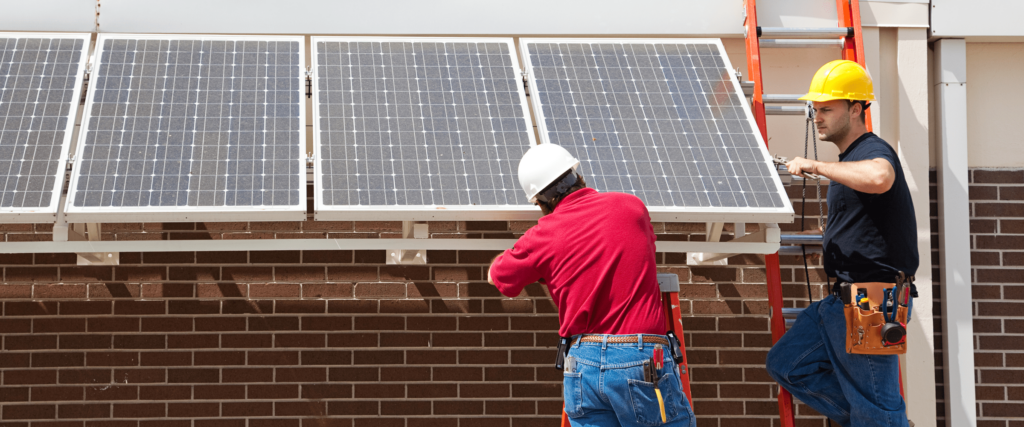One of the most well-known financial incentives in the solar industry is the Federal Investment Tax Credit, also known as the Federal ITC or Solar Tax Credit.
For homeowners considering installing solar panels on their homes, 2019 is an important year for the Federal Solar Tax Credit as the value of the credit will start to decline after this year. Find out more about how the solar investment tax credit works, how it will decline, and the campaign to extend the savings.
The Slow Decline of the Federal ITC
The Federal ITC is a tax incentive that applies to residential and commercial solar photovoltaic (PV) installations as well as other eligible renewable energy technology projects. It was first enacted in 2006 and gives homeowners and business owners the ability to claim a tax credit equaling 30% of the total solar installation costs from what they own on their personal income or business taxes for that year. If the tax credit amount is more than the tax liability, the remaining credit can roll over to the next tax year.
In 2015, the Solar Energy Industries Association (SEIA) successfully campaigned for a four-year full extension of the Federal ITC, followed by a progressive step-down decline in the deduction rate beginning in 2020. his means by 2022, the Federal ITC for residential systems will be eliminated, while commercial solar installations will be left with an indefinite 10% tax credit.
What will the solar tax credit be if solar is installed in:
- 2019 — 30%
- 2020 — 26%
- 2021 — 22%
- 2022 — 0% (exception for commercial solar installations – 10%)
How to Qualify for the Federal ITC
Not every solar installation project will qualify for the tax savings of the ITC. To be eligible:
- You must own your solar energy system (solar leasing does not qualify)
- You must live in the home where the solar system is installed
- You must have sufficient taxable income (this is a tax credit and not a rebate)
- For residential systems, the system must be installed, and in-service for the year you’re claiming the tax credit (i.e., in service by December 31, 2019 for 30% tax credit; in service by December 31, 2020 for 26%, etc.).
If you meet the above requirements, we recommend that you save all of your receipts and fill out the IRS form 5695. Then, add your renewable energy claim to your standard 1040 tax form for that year.
While we outline some of the main eligibility requirements we are not tax professionals. Not everyone qualifies, so please consult your tax professional to discuss your specific tax situation and eligibility for tax credits.

Helping Homeowners Go Solar
Both California and Florida have seen significant progress in solar installations since the Federal Solar Tax Credit was enacted. Florida ranks fifth in the nation, with over 42,000 total solar installations, and is expected to rank third in solar growth over the next five years. Meanwhile, California leads the nation in both installed capacity and growth, with over 1 million total solar installations and an expected growth of 15,132 megawatts over the next five years.
The Solar Tax Credit Extension Campaign
To date, the solar investment tax credit has been credited in adding $140 billion to private investment and growing solar deployment across the US since 2006. With all good things, many in the industry don’t want to see the tax credit come to an end.
This July, bi-partisan members in the House of Representatives and Senate introduced new legislation that would extend the Federal Investment Tax Credit, at the full 30% deduction rate, for an additional five years. SEIA is once again taking the lead of the #DefendITC campaign on behalf of the solar industry. A recent SEIA and Wood Mackenzie Power & Renewable report estimates that extending the ITC would create an additional 82GW to bring total solar installed to 385GW by 2030 – that’s enough to power 63 million homes.
While the extension is one of the most important issues in the solar industry, it’s unclear what outcome the legislation will face in the lead-up to the 2020 presidential race.
For homeowners looking to take advantage of the maximum solar tax credit, the only current way to guarantee the 30% rate is to install solar before December 31st, 2019.
Solar Installation Qualifies for PACE Financing
Homeowners interested in investing in a clean, renewable future for their home energy may be eligible to finance their solar installation using Property Assessed Clean Energy financing (PACE) from Renew Financial. PACE financing provides homeowners access to 100% of the funds needed for their solar installation projects. Payments are then made over multiple years as a line item on the homeowner’s property taxes at a low, fixed interest rate.
If you’re looking to go solar before the ITC decreases, talk to Renew Financial about the options available to finance your solar installation with PACE financing.



